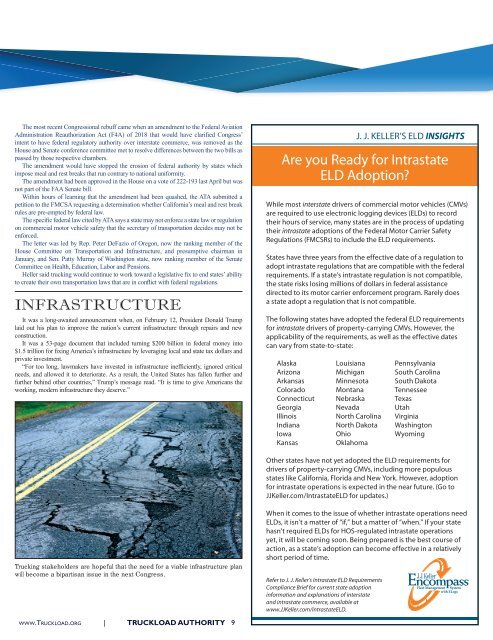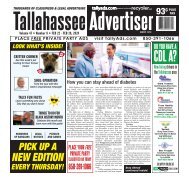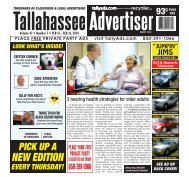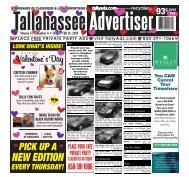TLA34_AllPages_R
Create successful ePaper yourself
Turn your PDF publications into a flip-book with our unique Google optimized e-Paper software.
The most recent Congressional rebuff came when an amendment to the Federal Aviation<br />
Administration Reauthorization Act (F4A) of 2018 that would have clarified Congress’<br />
intent to have federal regulatory authority over interstate commerce, was removed as the<br />
House and Senate conference committee met to resolve differences between the two bills as<br />
passed by those respective chambers.<br />
The amendment would have stopped the erosion of federal authority by states which<br />
impose meal and rest breaks that run contrary to national uniformity.<br />
The amendment had been approved in the House on a vote of 222-193 last April but was<br />
not part of the FAA Senate bill.<br />
Within hours of learning that the amendment had been quashed, the ATA submitted a<br />
petition to the FMCSA requesting a determination whether California’s meal and rest break<br />
rules are pre-empted by federal law.<br />
The specific federal law cited by ATA says a state may not enforce a state law or regulation<br />
on commercial motor vehicle safety that the secretary of transportation decides may not be<br />
enforced.<br />
The letter was led by Rep. Peter DeFazio of Oregon, now the ranking member of the<br />
House Committee on Transportation and Infrastructure, and presumptive chairman in<br />
January, and Sen. Patty Murray of Washington state, now ranking member of the Senate<br />
Committee on Health, Education, Labor and Pensions.<br />
Heller said trucking would continue to work toward a legislative fix to end states’ ability<br />
to create their own transportation laws that are in conflict with federal regulations.<br />
INFRASTRUCTURE<br />
It was a long-awaited announcement when, on February 12, President Donald Trump<br />
laid out his plan to improve the nation’s current infrastructure through repairs and new<br />
construction.<br />
It was a 53-page document that included turning $200 billion in federal money into<br />
$1.5 trillion for fixing America’s infrastructure by leveraging local and state tax dollars and<br />
private investment.<br />
“For too long, lawmakers have invested in infrastructure inefficiently, ignored critical<br />
needs, and allowed it to deteriorate. As a result, the United States has fallen further and<br />
further behind other countries,” Trump’s message read. “It is time to give Americans the<br />
working, modern infrastructure they deserve.”<br />
J. J. KELLER’S ELD INSIGHTS<br />
Are you Ready for Intrastate<br />
ELD Adoption?<br />
While most interstate drivers of commercial motor vehicles (CMVs)<br />
are required to use electronic logging devices (ELDs) to record<br />
their hours of service, many states are in the process of updating<br />
their intrastate adoptions of the Federal Motor Carrier Safety<br />
Regulations (FMCSRs) to include the ELD requirements.<br />
States have three years from the effective date of a regulation to<br />
adopt intrastate regulations that are compatible with the federal<br />
requirements. If a state’s intrastate regulation is not compatible,<br />
the state risks losing millions of dollars in federal assistance<br />
directed to its motor carrier enforcement program. Rarely does<br />
a state adopt a regulation that is not compatible.<br />
The following states have adopted the federal ELD requirements<br />
for intrastate drivers of property-carrying CMVs. However, the<br />
applicability of the requirements, as well as the effective dates<br />
can vary from state-to-state:<br />
Alaska Louisiana Pennsylvania<br />
Arizona Michigan South Carolina<br />
Arkansas Minnesota South Dakota<br />
Colorado Montana Tennessee<br />
Connecticut Nebraska Texas<br />
Georgia Nevada Utah<br />
Illinois North Carolina Virginia<br />
Indiana North Dakota Washington<br />
Iowa Ohio Wyoming<br />
Kansas<br />
Oklahoma<br />
Other states have not yet adopted the ELD requirements for<br />
drivers of property-carrying CMVs, including more populous<br />
states like California, Florida and New York. However, adoption<br />
for intrastate operations is expected in the near future. (Go to<br />
JJKeller.com/IntrastateELD for updates.)<br />
Trucking stakeholders are hopeful that the need for a viable infrastructure plan<br />
will become a bipartisan issue in the next Congress.<br />
www.Truckload.org | TRUCKLOAD AUTHORITY 9<br />
When it comes to the issue of whether intrastate operations need<br />
ELDs, it isn’t a matter of “if,” but a matter of “when.” If your state<br />
hasn’t required ELDs for HOS-regulated intrastate operations<br />
yet, it will be coming soon. Being prepared is the best course of<br />
action, as a state’s adoption can become effective in a relatively<br />
short period of time.<br />
Refer to J. J. Keller’s Intrastate ELD Requirements<br />
Compliance Brief for current state adoption<br />
information and explanations of interstate<br />
and intrastate commerce, available at<br />
www.JJKeller.com/IntrastateELD.<br />
Fleet Management System<br />
with ELogs

















